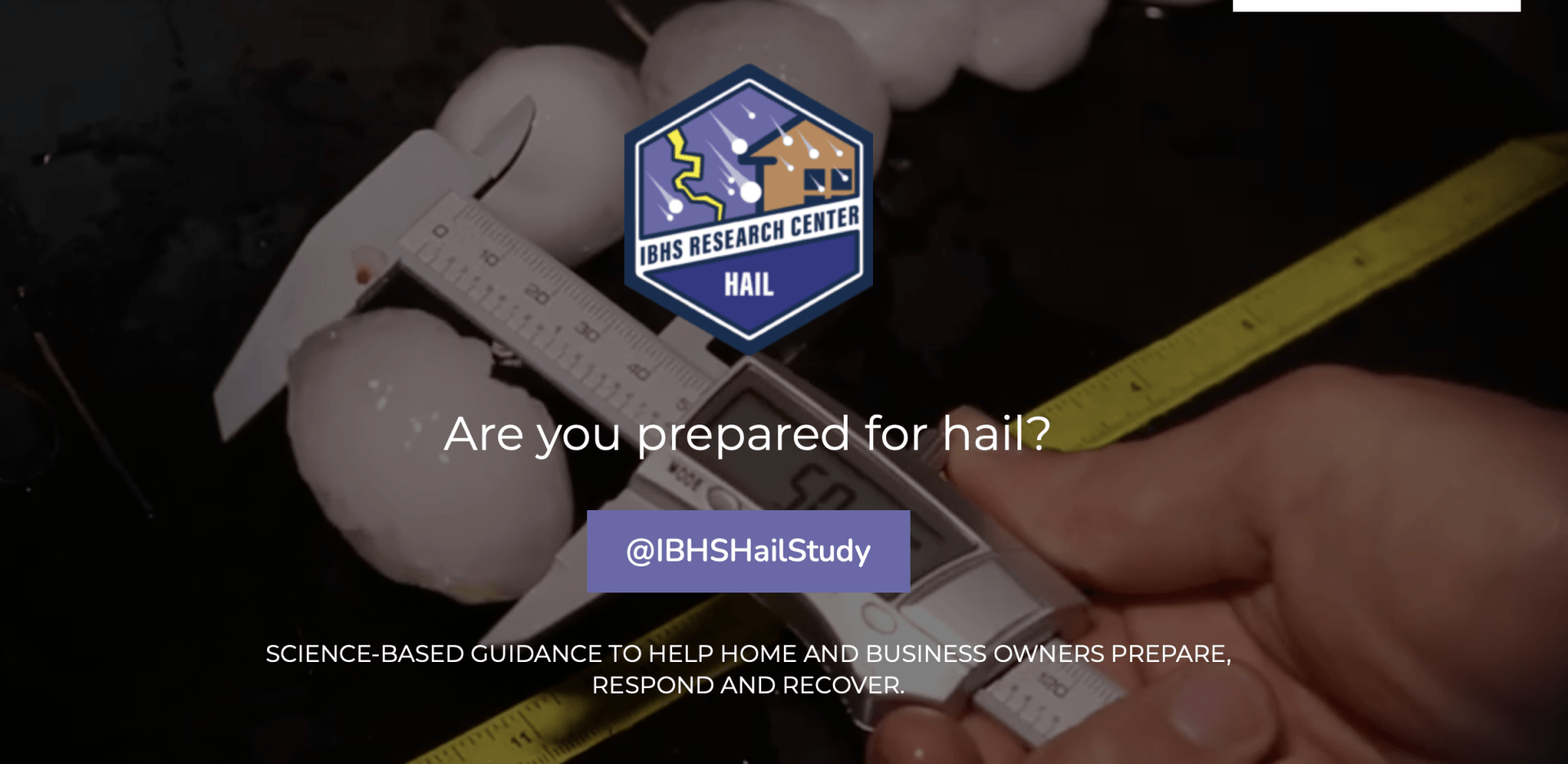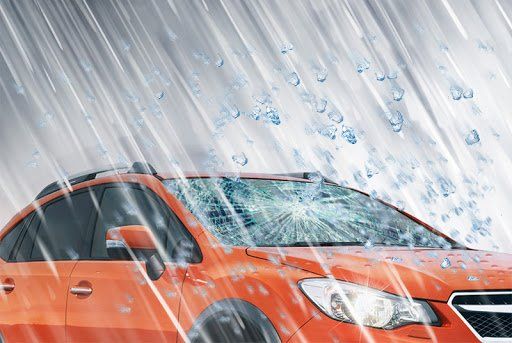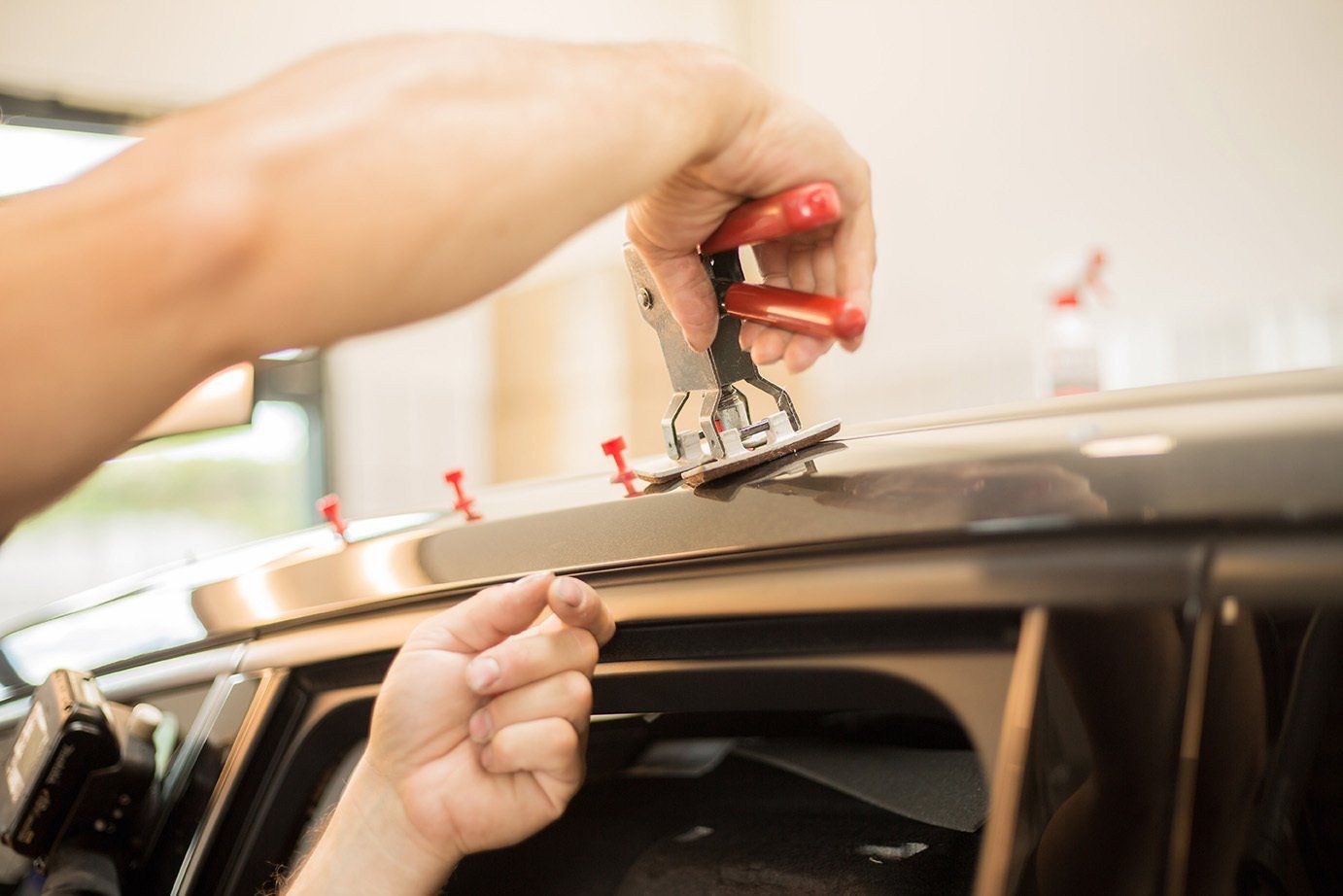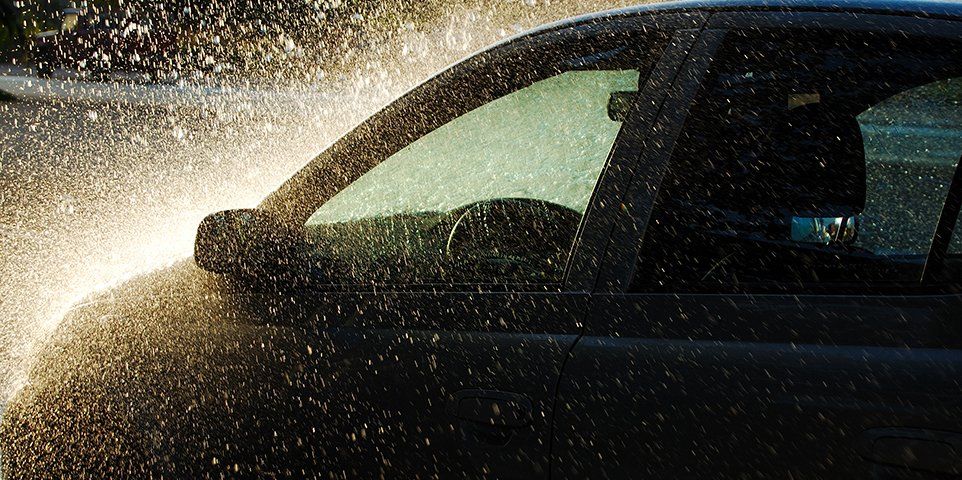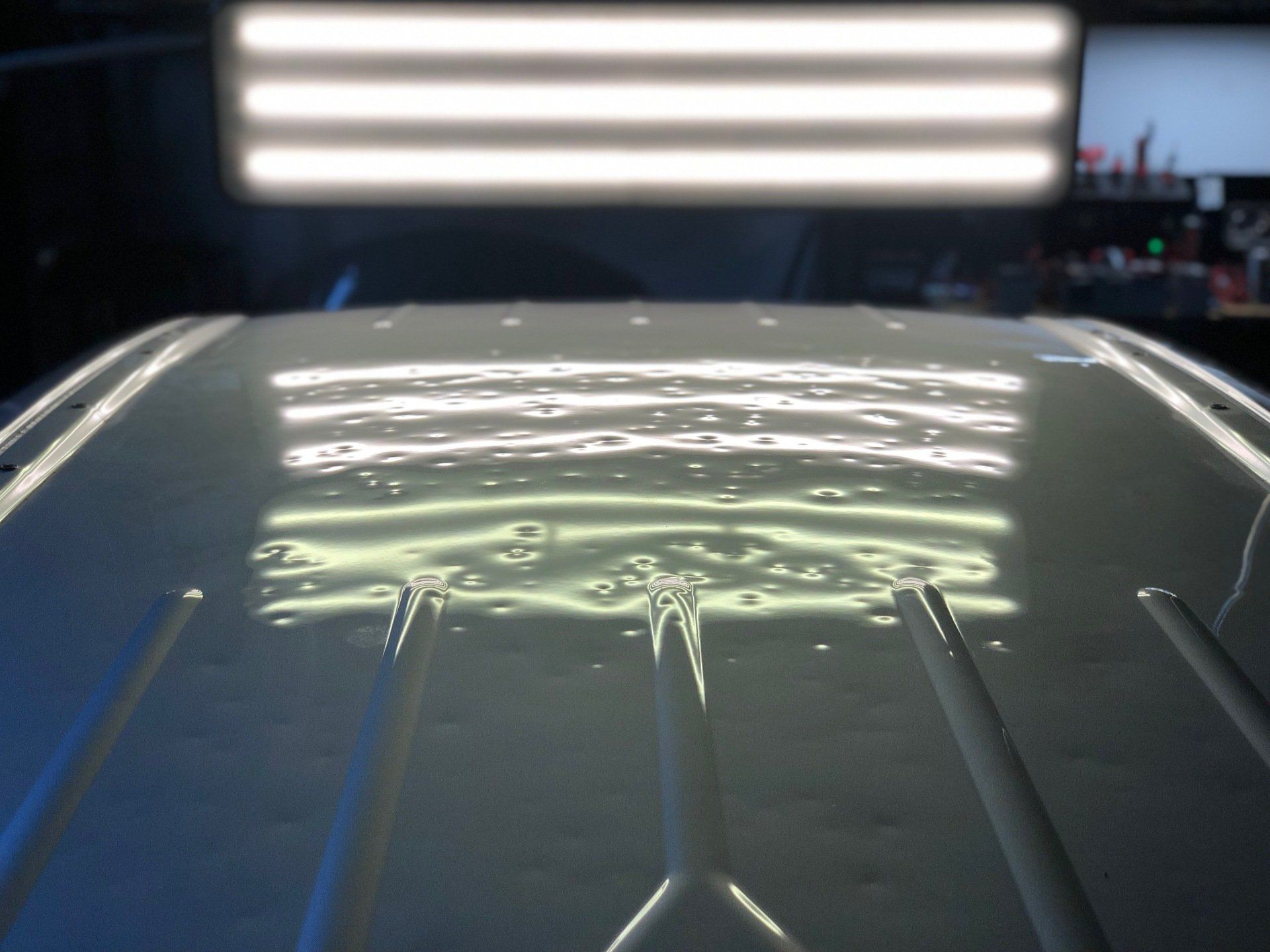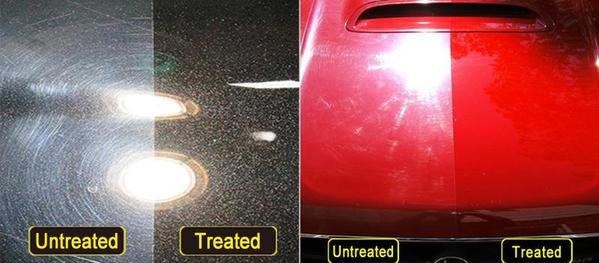Why we use light boards in paintless dent repair?
Why we use light boards in paintless dent repair
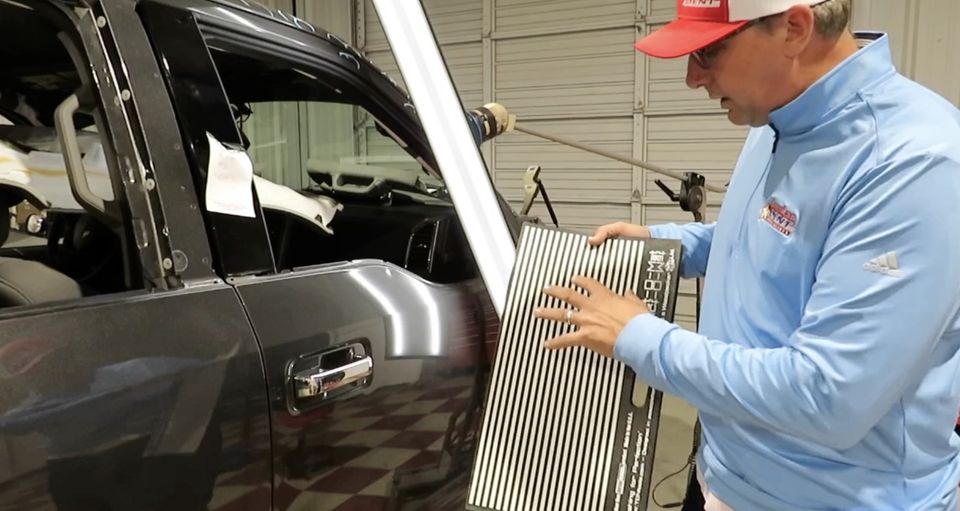
Hi, Andy with American Dent Specialists. We had one of our customers ask why we use light boards or line boards to fix dents. What's the purpose? How do we use the tool for dent repair? So I thought I'd make a little video today talking to you about why we use the line boards and how we receive and process the information that the board gives us in order to repair the dent.
I use what's called fog to repair a dent. A lot of pdr technicians also use a line system. They'll have a line grid on their light board or their light to give them this reflection. It just depends on really, how you were taught or the way each paintless dent technician's brain processes the information that the board gives them. I use a light board with fog on it in order to see the depth and the height of any dent for dent removal. Depending on where the light is placed, or where I'm at in the paintless dent repair process, I can use this light and fog set up to give the information that I need from the damage in order to take action and make the dent repairs.
Are the edges of the dent too high? Does it have a crown around it? Is the bottom still low? Has it been blended out enough to put all the metal, and the surface, and all the tension back where it was originally in the panel before it was dented or damaged? These pdr light boards are our main tool that we use to translate the information that the panel is giving us in order to repair the damage. With hail damage like on this door, we'll move up and down the panel depending on large dents, small dents, medium dents, and we'll move the light closer to the dent or the dents, or further away down the panel for small lows, or small imperfections.
The reason being is we need to be able to see if there's any height or depth left to the damage in order to adjust it, either blend out the highs or pick up the lows using pushing methods, or pulling methods using glue, all parts of the dent repair process. This is the key tool that I use, or the paintless dent technicians use in order to gather the information needed as to what is necessary to completely repair the damage using pdr.
Having clean light boards and very crisp lights is important for me in order to take things to a hundred percent repaired and take out all the damage.
If you're wondering what the difference between fog and line boards are, fog is actually a faded-out line edge. You can’t see it here in the light, but you can see it here on the car. You have a bright light in the middle, depending on where that line is, and then you'll have it grayed or faded out, we call it the fog, on the edge of the light. That's where we're find the depth and height of the hail damage or door ding. Whether the dent is tight or spread out is the difference between high and low. It's the same with a line board. You have this is the reflective mat from TDN Tools, and I use this when I'm working on creases. I'll run the lines off the bottom of the floor and get a cross section of how that dent is coming out.
You can see how crisp these lines are. In our industry, lines don't lie. That's the rule, lines down lie, so a lot of times I'll use a line board to finish off a dent removal at the very, very end to make sure that the panel looks the way this reflection would be in the panel. This is crisp, this is soft, and it really depends on how my brain is translating that dent at that time. Different techniques for different pdr technicians. Luckily, I've been trained in both, so I can use both pdr methods. For me, lines are more of finishing a dent repair and fog is more bringing a dent up and getting the meat and potatoes out.
Twenty years ago, I was taught to use a fluorescent bulb to fix dents and when fog came along, it was just a natural transition for me. I used to have a light bulb with a piece of tape down the middle of it, and that's how I fixed a dent. Now with fog, technology and pdr tools have come so far with new developments, and new inventions in our industry that fog is where I've gravitated to in order to have a cleaner, faster, better dent repair.
Share This Blog

